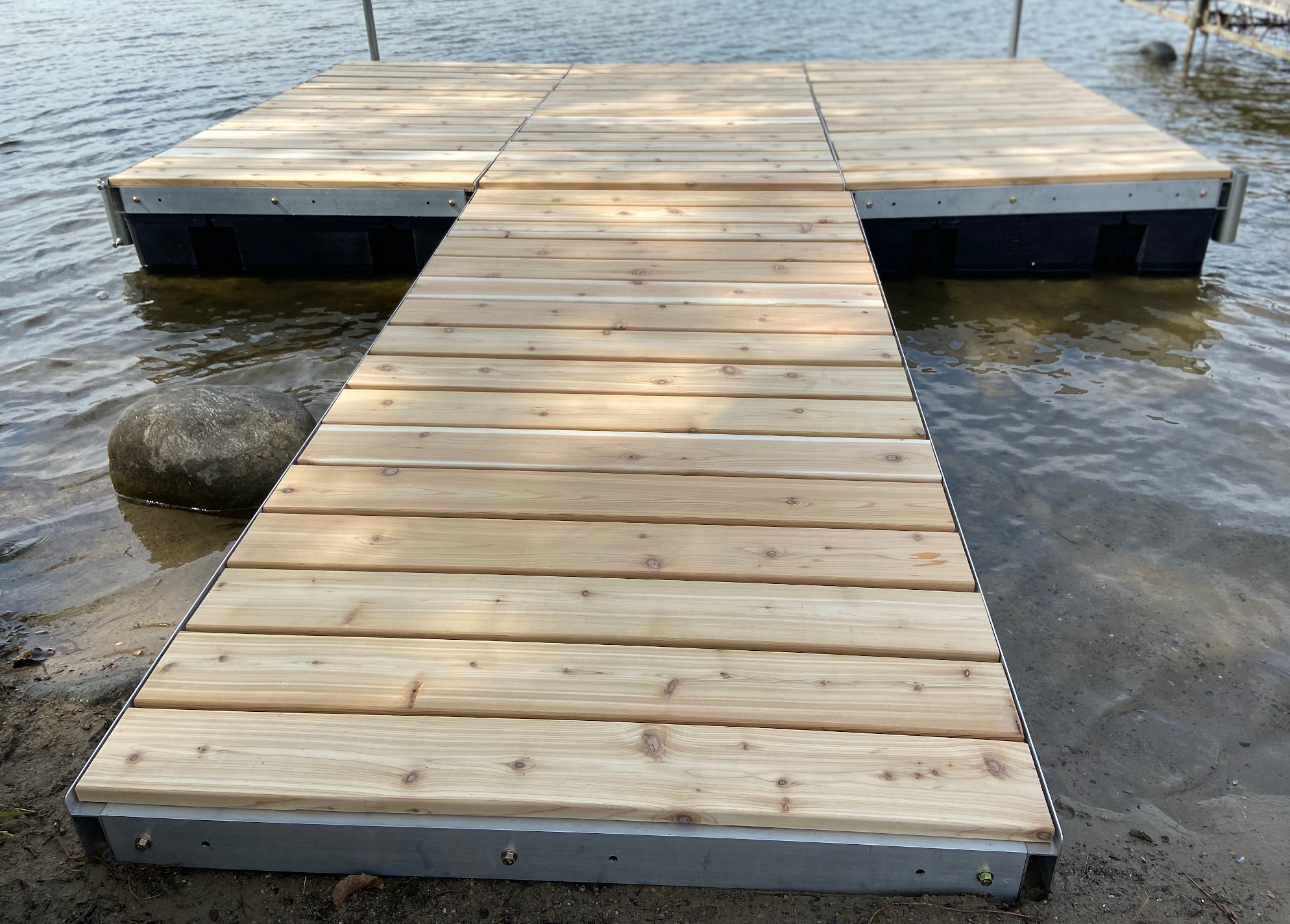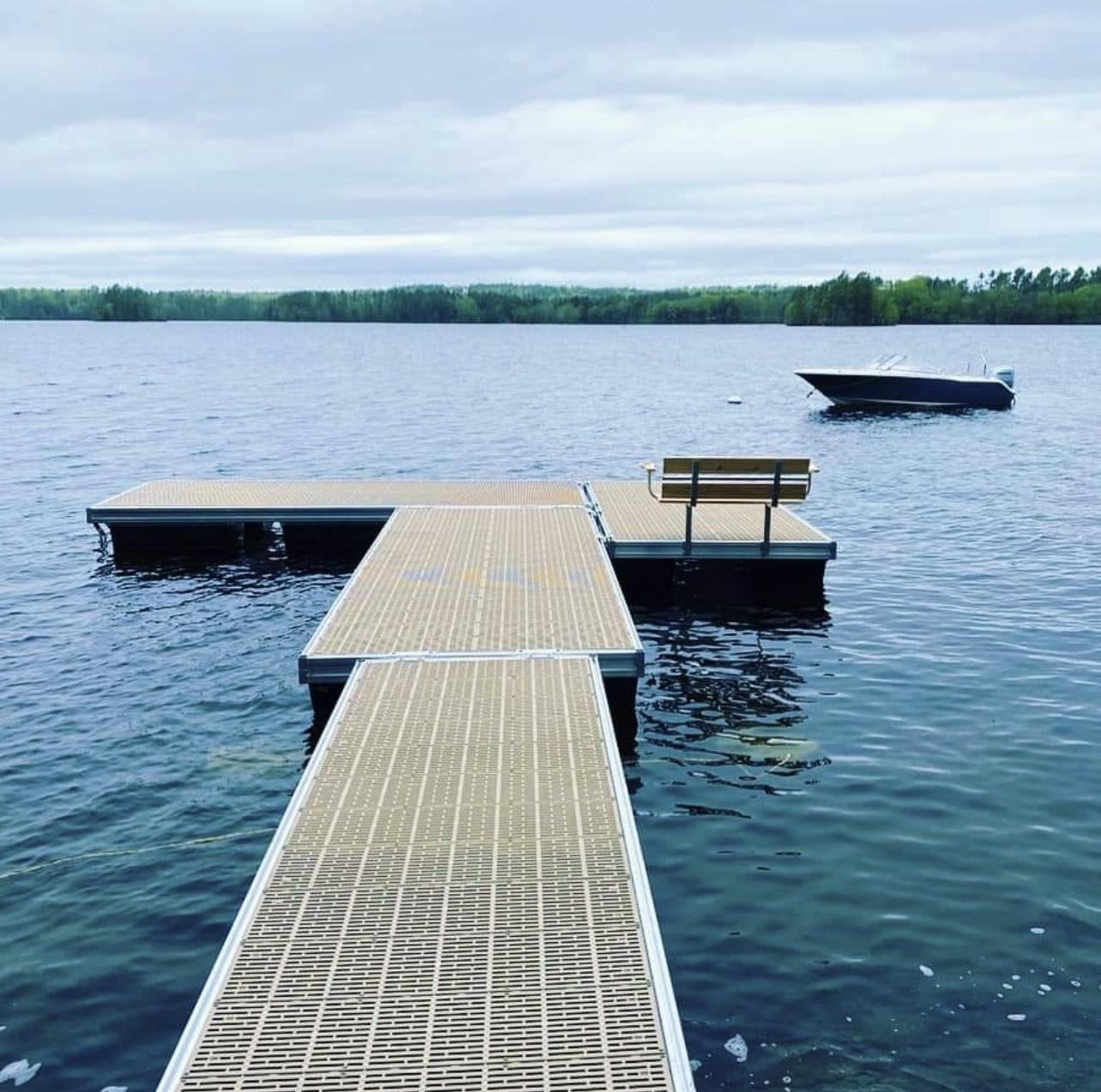Crafting Custom Solutions: Why a Floating Dock Builder is Vital for Distinct Requirements
Crafting Custom Solutions: Why a Floating Dock Builder is Vital for Distinct Requirements
Blog Article
Upgrade Your Waterfront With Resilient Floating Docks
Upgrading your waterside with durable floating docks can significantly boost both functionality and aesthetics, supplying a functional solution for different water activities. With a variety of products readily available, including low-maintenance alternatives and typical wood, selecting the appropriate dock can match your individual style and satisfy functional requirements.
Benefits of Floating Docks
Floating docks deal a wide range of benefits that boost their appeal for numerous maritime applications. Among the main benefits is their adaptability to transforming water degrees - floating dock services. Unlike typical set docks, floating docks surge and loss with the tide, guaranteeing consistent ease of access for boats and boat no matter environmental conditions. This feature significantly reduces the threat of damages to vessels, as they stay safely anchored even during variations in water depth.
Furthermore, floating docks are less complicated to transfer and set up, supplying versatility for seasonal or temporary use. Their modular layout permits modification to fit details demands, whether for personal marinas, domestic waterfronts, or commercial applications.
Moreover, floating docks produce very little disruption to the water atmosphere, protecting regional communities and decreasing the chance of disintegration. They additionally supply improved security and stability for customers, as their resilient nature provides an extra flexible surface area than stiff frameworks.
Moreover, floating docks can help with a varied series of tasks, such as fishing, swimming, and leisure boating, making them a useful property for beachfront growth. Their versatility and usefulness make floating docks a recommended choice for a range of naval tasks.
Selecting the Right Materials
Picking proper materials for floating docks is essential to their long life, performance, and general performance. When picking products, take into consideration factors such as environmental direct exposure, upkeep needs, and architectural honesty. Usual products include timber, plastic, aluminum, and composite choices, each offering distinct benefits and negative aspects.
Timber, while cosmetically pleasing, needs routine maintenance to avoid rot and decay. Pressure-treated wood can enhance toughness, however it may still catch water damage in time. Plastic floats, typically made from high-density polyethylene, are immune to deterioration and require marginal maintenance, making them an eye-catching choice for low-maintenance applications.
Aluminum is another viable choice, known for its stamina and light-weight buildings. It is immune to rust and can withstand extreme weather, although it might be more costly than various other products. Composite materials integrate the finest features of wood and plastic, providing a low-maintenance and resilient alternative that resembles the look of timber without the associated drawbacks.
Ultimately, the selection of product must straighten with the planned usage, environmental considerations, and spending plan restrictions, making certain a useful and sturdy floating dock that fulfills your certain needs.
Setup Process Review
The successful installation of a drifting dock depends on cautious planning and execution, making certain that it runs effectively in its desired environment. The primary step includes assessing site conditions, consisting of water deepness, shoreline functions, and prevailing weather condition patterns, which will certainly inform the dock style and anchoring system.
Adhering to the site analysis, the next phase is to prepare the floating dock components. This consists of assembling the framework, safeguarding floats, and connecting any kind of required hardware. It is critical to guarantee that all links are durable and water-resistant to withstand marine problems.
As soon as the dock is assembled, the installment procedure commences with positioning the dock in the water. This can involve a crane or other lifting devices, particularly for bigger structures. Proper positioning is important for functionality and safety and security.

Maintenance Tips for Long Life
Routine upkeep is necessary for guaranteeing the long life and ideal performance of a drifting dock. To achieve this, begin with routine examinations a minimum of two times a year, concentrating on the honesty of the dock's visit site structure, including the flotation protection devices and linking equipment. Try to find signs of rust, wear, or damages, and address any kind of issues without delay to avoid more wear and tear.
Cleansing is another essential aspect of upkeep. Remove debris, algae, and barnacles from the dock's surface area to avoid slippery conditions and keep visual appeal. Use a soft brush and a mild cleaning agent to avoid damaging the dock's products.
Additionally, guarantee that the dock is effectively secured and secured to endure seasonal modifications in water degrees and weather. Check the anchoring system for stability and make modifications as needed.
Enhancing Your Exterior Visual
To create a visually attractive outside room, including a drifting dock can significantly enhance the general aesthetic of your waterside residential or commercial property. Floating docks are not just functional but can also act as a striking focal point that matches the natural environments - floating dock builder. Offered in different products and layouts, these docks can be customized to match your residential property's building design and landscape
The addition of ornamental aspects, such as integrated lighting or trendy railings, further boosts the dock's aesthetic allure. Take into consideration making use of all-natural wood surfaces, which blend perfectly with the environment, or going with modern-day products like aluminum or composite decking that use a smooth, contemporary appearance.
Tactically putting planters or seating areas on or around the dock can create welcoming areas that encourage leisure and pleasure of waterside views. In addition, integrating colors and textures that harmonize with your landscape will YOURURL.com certainly produce a cohesive aesthetic throughout your outdoor area.

Conclusion

Upgrading your beachfront with resilient floating docks can considerably enhance both capability and appearances, supplying a versatile option for numerous water activities. Unlike traditional set docks, floating docks surge and fall with the tide, ensuring constant accessibility for watercrafts and watercraft regardless of ecological problems.Selecting proper products for floating docks is vital to their durability, efficiency, and overall efficiency.As soon as the dock is assembled, the setup procedure commences with positioning the dock in the water.In recap, floating docks deal countless advantages, including flexibility to water level changes and a range of product options.
Report this page